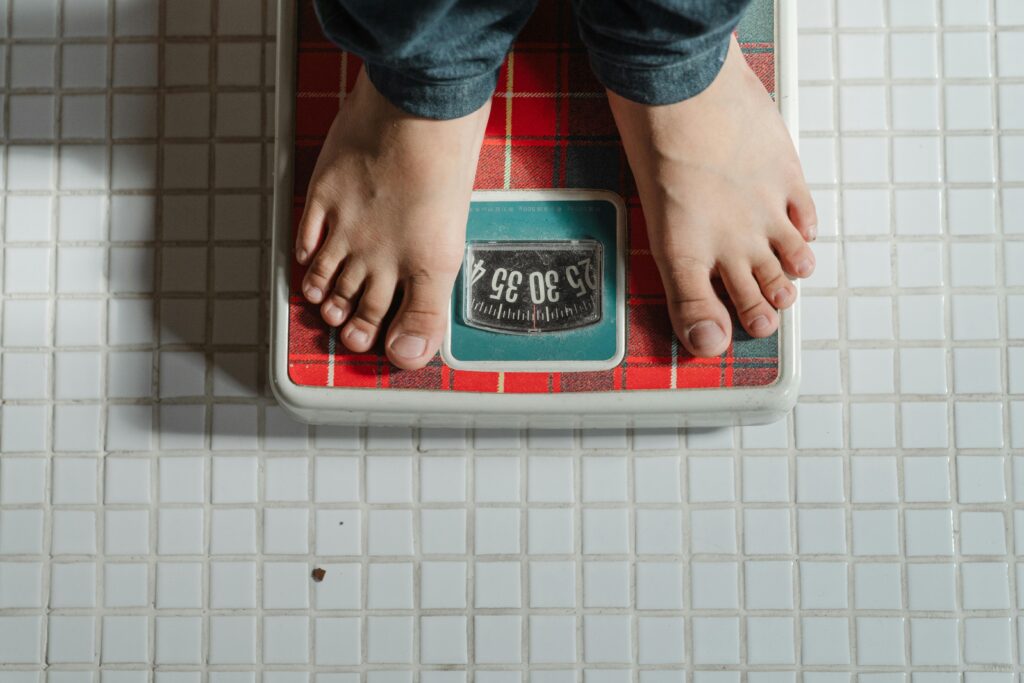The Ultimate Guide to Building an Exercise Routine to Lose Weight

When it comes to shedding pounds, creating an effective exercise routine to lose weight is key. While diet plays a major role, the right exercise regimen can boost your metabolism, increase muscle tone, and burn fat more efficiently. Whether you’re a beginner or have been working out for a while, this guide will help you develop a sustainable routine that fits your lifestyle and weight loss goals.
Understanding the Basics of Weight Loss and Exercise
To successfully lose weight, you need to burn more calories than you consume, creating a calorie deficit. Exercise helps you burn those extra calories and increases your metabolism, allowing you to shed pounds more effectively. But not all exercises are created equal. The best exercise routine to lose weight includes a balance of cardio for calorie burning, strength training for muscle building, and flexibility exercises for recovery.
Key Components of an Effective Exercise Routine to Lose Weight

1. Cardiovascular Exercises (Aerobic Activity)
Cardio is the cornerstone of any exercise routine to lose weight. These exercises increase your heart rate, helping you burn a significant amount of calories in a short time. Here are some effective cardio options:
- Running/Jogging: One of the most popular and accessible forms of cardio. A 30-minute run can burn around 300-500 calories, depending on intensity.
- Walking: While walking burns fewer calories than running, it’s easier on the joints and still effective, especially for beginners. Aim for brisk walking sessions of 45-60 minutes.
- Cycling: Whether on a stationary bike or outdoors, cycling is a great low-impact exercise that targets your legs and core.
- Swimming: This full-body workout burns calories while being gentle on the joints. A 30-minute swim can burn about 200-400 calories.
- Jump Rope: Just 10 minutes of jumping rope is equivalent to 30 minutes of running, making it an excellent high-intensity cardio exercise.
High-Intensity Interval Training (HIIT) is another fantastic option for those short on time. It involves short bursts of intense activity followed by brief recovery periods. For example, you could sprint for 30 seconds, walk for 1 minute, and repeat for 15-20 minutes. HIIT not only burns calories during the workout but also continues to burn fat after you finish, making it a crucial part of any exercise routine to lose weight.
2. Strength Training (Anaerobic Exercises)
Many people mistakenly believe that strength training is only for building muscle, but it plays a vital role in fat loss too. The more muscle you have, the more calories your body burns at rest. Including strength exercises in your exercise routine to lose weight will not only help you burn fat but also tone your body and prevent muscle loss.
Key strength training exercises include:
- Bodyweight exercises: Squats, push-ups, lunges, and planks are excellent for building strength without needing equipment.
- Weightlifting: Incorporating dumbbells or barbells into exercises like deadlifts, bench presses, and shoulder presses builds strength and burns fat.
- Resistance bands: These versatile tools offer resistance without heavy weights, making them perfect for at-home strength training.
You should aim to do strength training at least 2-3 times a week as part of your exercise routine to lose weight. Focus on compound movements like squats, deadlifts, and push-ups, which work multiple muscle groups at once.
3. Flexibility and Recovery
No exercise routine to lose weight is complete without recovery and flexibility exercises. Stretching and activities like yoga and Pilates improve flexibility, reduce the risk of injury, and promote muscle recovery. A flexible body is less prone to soreness and stiffness, allowing you to work out consistently.
Incorporate stretching into your daily routine, especially after workouts. Even 5-10 minutes of post-exercise stretching can significantly improve your range of motion and reduce muscle tightness.
Sample Weekly Exercise Routine to Lose Weight

Here’s a balanced weekly plan to help you get started:
- Day 1: 30-45 minutes of running/jogging + core workout (planks, crunches).
- Day 2: Full-body strength training (squats, push-ups, lunges, dumbbell rows).
- Day 3: 20-30 minutes of HIIT (jump rope or sprints) + stretching.
- Day 4: Strength training (upper body focus: bench presses, dumbbell curls).
- Day 5: 30-40 minutes of cycling or swimming.
- Day 6: Strength training (lower body focus: squats, deadlifts, lunges).
- Day 7: Rest day or active recovery (light walking or yoga).
This routine balances cardio, strength training, and recovery, making it a solid exercise routine to lose weight while maintaining muscle mass.
Importance of Consistency and Progress Tracking
No matter how great your exercise routine to lose weight is, consistency is key. Here are a few tips to stay on track:
- Track your progress: Measure your body fat percentage, take weekly progress photos, and track your workouts to see how far you’ve come.
- Increase intensity: Gradually increase the duration and intensity of your workouts to keep challenging your body.
- Set realistic goals: Avoid setting unattainable goals. Focus on gradual progress to avoid burnout.
Tailoring Your Exercise Routine to Lose Weight to Your Lifestyle
Not everyone has hours to spend at the gym. Luckily, you can adjust your exercise routine to lose weight to fit your schedule. If you’re short on time, quick 20-minute HIIT sessions can be just as effective as longer, moderate workouts. If you prefer working out at home, bodyweight exercises like squats, push-ups, and lunges require no equipment and can still give you a great workout.
The key is to find activities you enjoy and can stick with in the long term.
Nutrition’s Role in Your Exercise Routine to Lose Weight
No amount of exercise will help you lose weight if you aren’t eating a balanced, healthy diet. Focus on whole foods such as lean proteins, fruits, vegetables, whole grains, and healthy fats to complement your workouts. Protein is especially important for muscle repair and growth, which supports your strength training efforts. Staying hydrated is equally crucial, as dehydration can negatively affect your performance and recovery.
Common Mistakes to Avoid in Your Exercise Routine to Lose Weight
To maximize the results of your exercise routine to lose weight, avoid these common pitfalls:
- Overtraining: Too much exercise without rest can lead to injury and burnout. Always allow for recovery time.
- Skipping strength training: Many focus solely on cardio, but strength training is essential for building lean muscle and boosting metabolism.
- Inconsistent workouts: Sporadic exercise won’t yield the same results as a consistent, well-structured routine.
- Expecting quick results: Weight loss takes time. Focus on long-term progress, not quick fixes.
Conclusion: Building a Sustainable Exercise Routine to Lose Weight
The most effective exercise routine to lose weight is one that includes a balance of cardio, strength training, and flexibility exercises. Whether you’re a beginner or advanced, this guide provides a roadmap to build a routine that works for you. Stay consistent, track your progress, and pair your workouts with proper nutrition to see lasting results.
Remember, exercise isn’t just about burning calories—it’s about building a healthier, stronger, and more confident version of yourself. Start your exercise routine to lose weight today, and you’ll be on your way to achieving your fitness goals!
FAQs
1. What workout routine is best for losing weight?
The best exercise routine to lose weight combines cardiovascular exercises (like running, cycling, or swimming) with strength training (using weights or bodyweight exercises). Cardio helps burn calories quickly, while strength training builds muscle, which increases your metabolism. Including High-Intensity Interval Training (HIIT) is also effective as it maximizes calorie burn in a short amount of time.
2. Which exercise burns the most belly fat?
No single exercise targets belly fat specifically, but cardio exercises like running, swimming, and cycling, combined with core-strengthening exercises such as planks and crunches, are effective for overall fat loss, which includes the belly area. Incorporating HIIT workouts, which involve short bursts of intense cardio, is especially efficient for burning fat, including in the belly region.
3. Which exercise is best for weight loss?
The best exercise for weight loss is a combination of cardio and strength training. Activities like running, cycling, and HIIT workouts are excellent for burning calories. Strength training, such as lifting weights or performing bodyweight exercises (squats, lunges, push-ups), builds muscle, which helps burn more calories even at rest. A balanced approach that includes both types of exercise is key for effective weight loss.
4. Is 30 minutes of exercise a day enough to lose weight?
Yes, 30 minutes of exercise a day can be enough to lose weight, especially if the exercise is moderate to high intensity, such as HIIT, running, or cycling. Consistency is essential, and pairing exercise with a healthy diet will accelerate weight loss results. However, you may need to adjust your intensity or increase exercise duration over time as your body adapts to your routine.
5. Is 1 hour at the gym enough to lose weight?
Yes, 1 hour at the gym is sufficient for weight loss, as long as you combine cardio and strength training exercises during that time. A well-rounded gym session that includes 30 minutes of cardio and 30 minutes of strength training can help you burn calories and build muscle, leading to more efficient weight loss.
6. Can walking reduce tummy fat?
Yes, walking can help reduce tummy fat as part of a consistent exercise routine to lose weight. Walking, especially at a brisk pace, burns calories and can contribute to overall fat loss, including belly fat. While walking alone won’t target belly fat specifically, pairing it with a healthy diet and strength training can enhance the fat-burning process. Aim for 45-60 minutes of brisk walking most days of the week for the best results.
Discover More:



One Comment